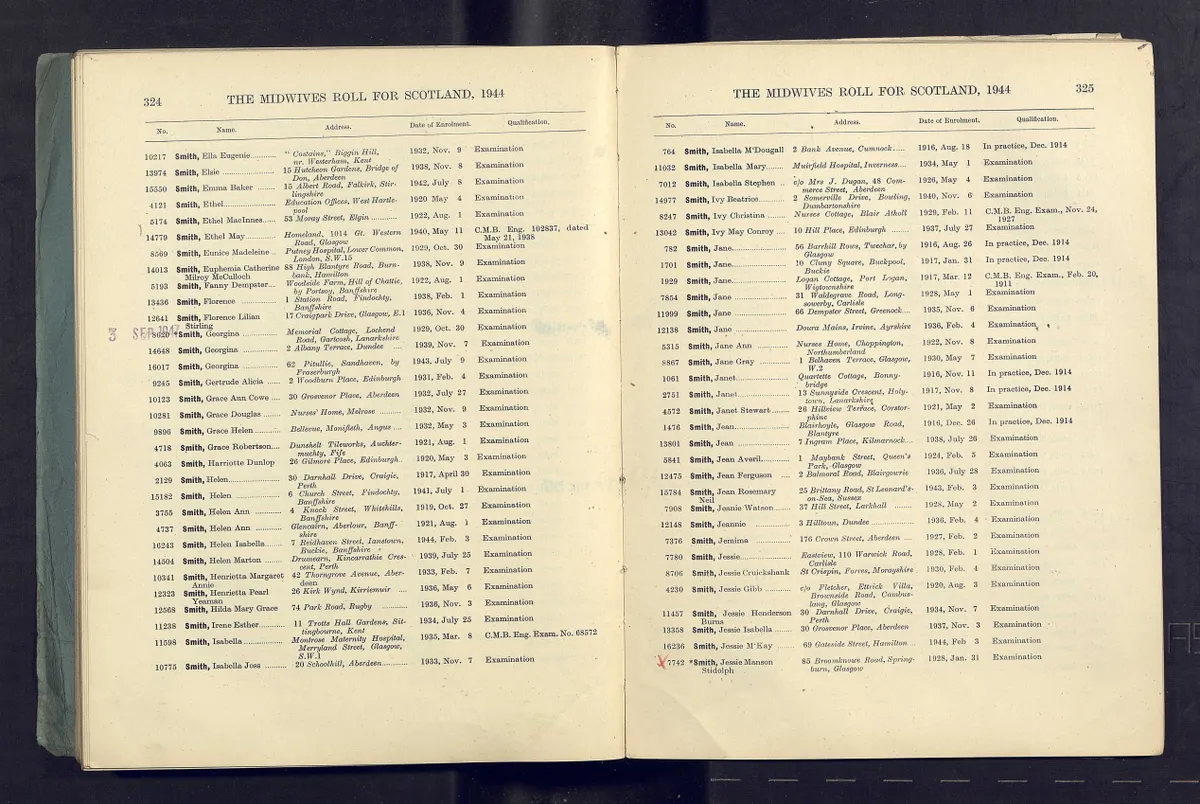Until the 19th century, nursing was viewed as lowly and unskilled, and there was little professional training for nurses. In 1860 Florence Nightingale, following her experiences improving nursing standards for injured soldiers in the Crimean War, established the first school of nursing at St Thomas’ Hospital in Central London. Other hospitals followed suit. At this time, hospital treatment of illness was quite rare, with the majority of nursing carried out privately in the home by female family members and servants. This left few nursing records apart from those of military nurses.
In the late 19th century advances in medicine demanded more highly skilled nurses, and the profession began to attract royal support from Queen Victoria and later Queen Alexandra. Gradually, nursing was becoming a more respectable career choice.

By 1901 there were approximately 63,500 female nurses and 5,700 male nurses in England and Wales. Most of them still worked in patients’ homes, rather than institutions. Male nurses were almost entirely engaged as mental-health nurses, and were not admitted to nurse-training schools.
As the profession evolved so did the need for reform. However, disagreements between the various training schools and organisations meant that it took many years before a consensus was reached and the Nurses Registration Act was finally passed in 1919.
The Act set up the General Nursing Council (GNC) which maintained a general register of nurses, as well as supplementary registers for mental-health nurses, paediatric nurses and male nurses. However, it was not compulsory to join the register until 1943. Before these reforms, nursing records were usually kept by individual training schools, mostly attached to major hospitals. Many of these documents still survive in local archives.
Ancestry holds the 1898-1968 registers of the Royal College of Nursing, which contain more than 1.5 million records. It also holds Scottish nursing applications from 1921 to 1945 and the UK Midwives Roll from 1904 to 1959.
If you are confident that your nurse should appear in the records and they can’t be found, remember that nicknames, second names, maiden names or double-barrelled names can all cause confusion. Try advanced or wildcard searches where possible, to get round incorrect entries or transcriptions. Some of the early collections might even be small enough to browse. Your nurse may also be missing because they belonged to religious or voluntary organisations such as the Salvation Army or the British Red Cross. You can find details of their archives on their websites. The Royal College of Nursing (RCN) also has a guide to nursing records for family historians.

How to find military nursing records in the UK
Military nursing records increased dramatically with the onset of the First World War. The majority of military nurses of this period worked in Queen Alexandra’s Imperial Military Nursing Service (QAIMNS), which had been established in 1902.
There are more than 15,000 service records for nurses in this series, the majority of which have been digitised by The National Archives (TNA). There are some records for nurses who served before 1914 and some for those who served after the war, but no records after 1939. However, Sue Light, an expert in British military nursing, has suggested that the number of records in this series should be closer to 22,000 – see her excellent website Scarlet Finders for more information about the suspected shortfall.
These records will usually consist of a preprinted army application form with the nurse’s full name, date and place of birth. It should also list the parents’ address; previous employment or training; and information relating to their references. You may discover the units they served in and whether they served abroad, as well as comments from superiors about conduct and suitability, and when their service ended. Sometimes letters or other documentation are attached as well, which can provide fascinating additional detail.
TNA is home to a number of other useful sources such as Medal Index Cards (WO 372) . These are the index cards to the First World War campaign medal rolls, and are usually more detailed than the rolls themselves. These cards record who was entitled to a medal rather than their award. For this you should check the medal rolls (WO 329), which are available at Ancestry.
TNA also holds the Royal Red Cross Register (WO 145). This military decoration was awarded to women from 1883 onwards for their exceptional service to the sick and wounded of the British Army or the Royal Navy. There are some 9,000 records in this series covering 1883–1994, which is available at Findmypast. The award was extended to men in 1977, and the date the award was announced in The London Gazette is usually included in the register.
Findmypast also has British Army casualty lists from both world wars, which include nurses. They state the individual’s rank, service number, date of becoming a casualty and type of casualty. People who were killed, wounded, went missing, or were taken as prisoners of war are all included.